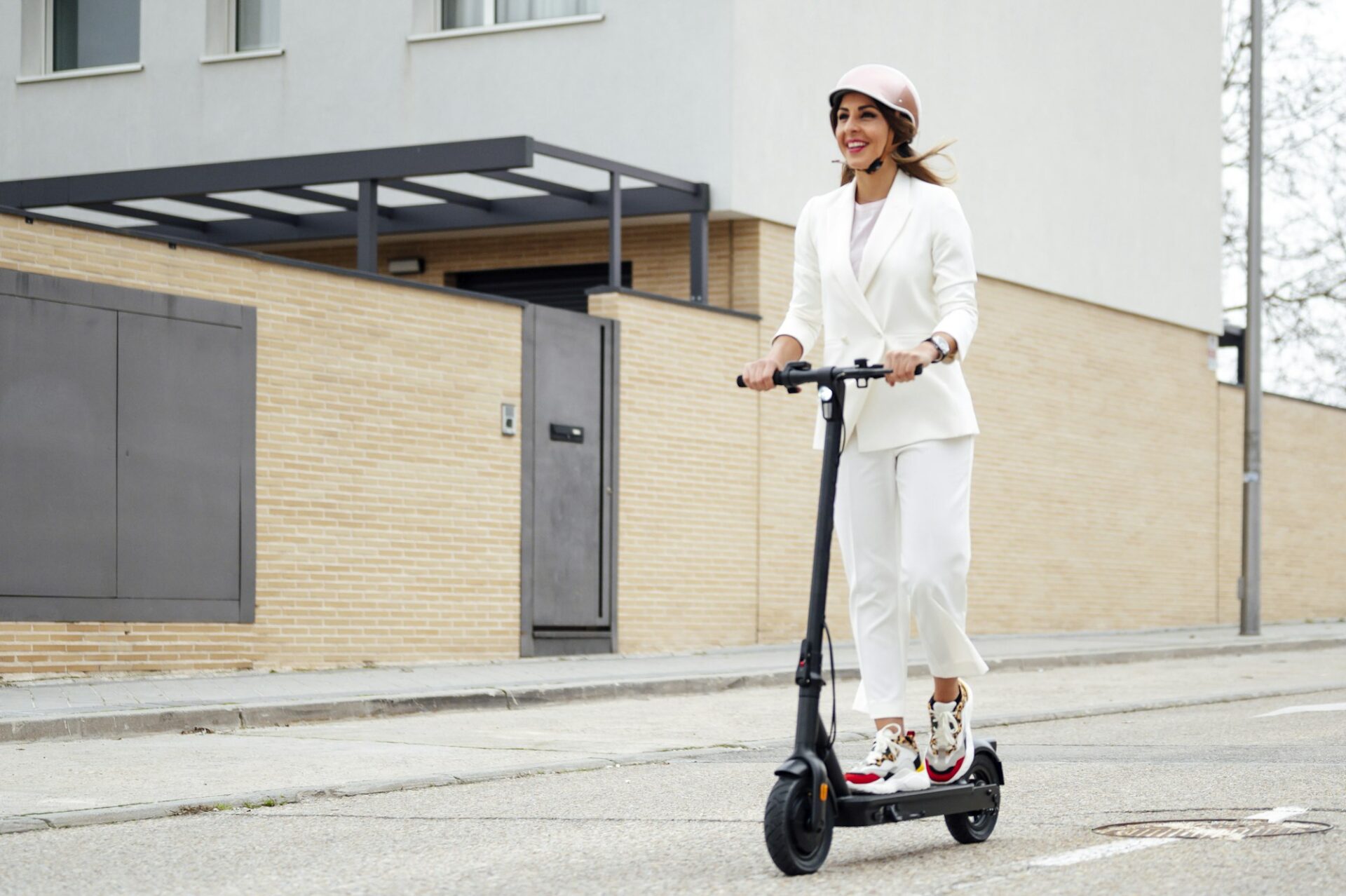Electric scooters have rapidly become a popular mode of urban transportation, providing an eco-friendly and efficient alternative to traditional vehicles. However, their increasing prevalence has prompted a variety of questions, chief among them being: are electric scooters street legal? The answer is not straightforward, as legalities can vary significantly depending on location and specific circumstances.
Understanding the legal framework surrounding scooters is crucial for riders to ensure compliance with local regulations and to promote safe usage. This article aims to offer a detailed overview of the various laws and regulations, addressing key points such as:
- Electric scooter laws by state: Legal requirements can differ from state to state, impacting where and how scooters can be used.
- Electric scooter street regulations: This includes specifics about what streets and roadways scooters are permitted on.
- Licensing and age restrictions: Clarifying whether a license is needed and the minimum age for operating a scooter.
- Sidewalk vs. street usage: Rules regarding whether scooters can be ridden on sidewalks or restricted to streets.
- Safety guidelines: Recommended and required safety measures, such as helmet use and speed limits.
These points are critical for riders wishing to avoid legal issues and ensure their own safety and that of others. By understanding the comprehensive landscape of scooter regulations, riders can enjoy the benefits of this modern mode of transport with peace of mind.
In the following sections, we will explore each aspect in greater detail, starting with a breakdown of scooter laws by state. This will provide a foundation for understanding the varying regulations that apply across different regions.

Electric Scooter Laws by State
Electric scooter laws vary significantly from state to state, reflecting differing attitudes and infrastructure capabilities. Understanding these laws is crucial for ensuring that you operate your scooter legally and responsibly. Below are some key aspects of laws across different states in the U.S.:
California
- Helmet Requirements: Riders under 18 must wear a helmet.
- Speed Limits: Scooters are limited to 15 mph.
- Sidewalk Restrictions: Riding on sidewalks is prohibited.
- Minimum Age: Riders must be 16 years or older.
Texas
- Helmet Requirements: No statewide helmet law, but local ordinances may apply.
- Speed Limits: Generally restricted to 15 mph.
- Sidewalk Restrictions: Local regulations vary; some cities prohibit sidewalk use.
- Minimum Age: No specific state law, but local regulations apply.
Florida
- Helmet Requirements: Mandatory for riders under 16.
- Speed Limits: Limited to 20 mph.
- Sidewalk Restrictions: Allowed unless prohibited by local ordinance.
- Minimum Age: Riders must be at least 16 years old.
New York
- Helmet Requirements: Mandatory for riders under 18 and those using shared scooters.
- Speed Limits: Restricted to 15 mph.
- Sidewalk Restrictions: Riding on sidewalks is prohibited.
- Minimum Age: Riders must be at least 16 years old.
By consulting state-specific regulations, you can ensure compliance and ride safely. In the next section, we will delve into general street regulations for scooters, providing a broader overview of where and how these devices can be used on public roads.

Street Regulations for Electric Scooters
The question of whether scooters are street legal often hinges on specific street regulations that address their use. These regulations can cover a variety of aspects, including speed limits, the types of roads they can be used on, and operational requirements. Here’s a detailed look at key street regulations for scooters:
Speed Limits
- Most states impose a maximum speed limit for scooters, typically ranging from 15 to 20 mph.
- Speed limits may be further reduced in specific zones such as school zones, pedestrian-heavy areas, and residential neighborhoods.
Road Types and Restrictions
- Electric scooters are generally allowed on streets with speed limits of 25 miles per hour or lower.
- Access to highways, expressways, and other high-speed roads is typically prohibited.
- Certain local jurisdictions may have additional restrictions or allowances, so it’s essential to consult local laws.
Traffic Rules
- Riders must adhere to regular traffic laws, including obeying traffic signals and signage.
- Hand signals or turn signals are often required when changing directions.
- Electric scooters should ride as close to the right-hand side of the street as possible, except when making left turns or avoiding obstacles.
Nights and Low Visibility Conditions
- Many states require scooters to be equipped with lights and reflectors if operated at night or in low visibility conditions.
- Front white lights and rear red lights are commonly mandated to enhance visibility.
Local Ordinances
- Local governments have the authority to implement additional regulations specific to their jurisdictions.
- These regulations can include designated riding areas, specific no-ride zones, and permit requirements.
Understanding these street regulations ensures that you are compliant with local laws and enhances road safety for both you and other users. Following these guidelines helps in preventing accidents and legal issues while riding your scooter.
Next, we will examine licensing and age restrictions for operating scooters, which are crucial for understanding who can legally ride these devices.

Licensing and Age Restrictions for Electric Scooters
Licensing requirements and age restrictions for scooters can vary significantly based on jurisdiction. These regulations are designed to ensure that operators have the necessary maturity and understanding to handle scooters safely.
Do Electric Scooters Need a License?
- Most states do not require a valid driver’s license to operate a scooter; however, local regulations can differ.
- Some states, like California, mandate that riders hold at least a learner’s permit.
- Beyond state laws, cities may impose additional requirements, including permits or special permissions.
Age Restrictions
- Commonly, states set a minimum age for operating scooters, usually ranging from 16 to 18 years.
- For example, in California and Florida, riders must be at least 16 years old, while other states may set higher minimum age limits.
- Some states have no specific age restrictions but might require parental consent for minors.
Parental and Guardian Responsibilities
- Parents or guardians should be aware of their state’s specific age restrictions and ensure compliance for minor riders.
- They should also instill good riding practices and adherence to safety guidelines in young riders.
Training and Competency
- While formal training is generally not required, familiarizing young riders with the rules of the road and scooter operation is essential.
- Some states advocate for completion of an online safety course, particularly for younger riders.
Determining whether you need a license to ride a scooter and understanding age restrictions are critical components of legal compliance and safety. Compliance with these requirements helps to mitigate risks, ensuring that only qualified and responsible individuals operate scooters on public streets.
Next, we will discuss whether scooters are legal on sidewalks and explore the guidelines for where you can ride scooters.

Sidewalk and Street Usage Guidelines
One of the most common questions regarding scooters is whether they are legal on sidewalks or if they must stay on the streets. Regulations for sidewalk and street usage are designed to ensure the safety of both scooter riders and pedestrians. Here are the critical aspects of these guidelines:
Are Electric Scooters Legal on Sidewalks?
- In many states, riding scooters on sidewalks is prohibited to avoid conflicts with pedestrians.
- For example, California law strictly forbids sidewalk riding for electric scooters.
- Some cities may permit sidewalk usage in certain areas, typically where streets are deemed too dangerous for scooter traffic.
Where Can You Ride Electric Scooters?
- Bike Lanes: Electric scooters are often allowed in bike lanes, providing a safer environment than general traffic lanes.
- Streets: Riders are generally permitted on streets with 25 mph speed limits or lower. Higher-speed roads are typically restricted.
- Multi-Use Paths: Some jurisdictions allow scooters on multi-use bicycle paths and pedestrians.
Special Zones and Restrictions
- Local ordinances may designate specific no-ride zones, often in densely populated or high-traffic areas.
- Some cities have geofencing technology integrated into share scooters, automatically slowing them down or stopping them in restricted areas.
Compliance and Safety Considerations
- Understanding and adhering to local regulations can help prevent accidents and legal penalties.
- Riders should always yield to pedestrians and exercise caution when navigating through mixed-use areas.
In summary, whether you can legally ride a scooter on sidewalks or streets depends largely on local laws. Awareness of these guidelines ensures safe and lawful operation. Always check local regulations to confirm where scooters are permitted in your area.
Next, we will discuss crucial safety guidelines and helmet requirements to ensure your rides are both enjoyable and secure.

Safety Guidelines and Helmet Requirements
Safety is paramount when operating a scooter. Adhering to safety guidelines and understanding helmet requirements can significantly reduce the risk of injuries. Here’s a comprehensive overview of the essential safety practices and regulations that every electric scooter rider should be aware of:
Electric Scooter Safety Guidelines
- Pre-Ride Inspection: Always inspect your scooter before riding. Check the brakes, tires, and lights to ensure everything is functioning properly.
- Awareness of Surroundings: Be constantly aware of your surroundings. Keep an eye out for pedestrians, other vehicles, and any potential hazards.
- Proper Use of Hand Signals: Use hand signals to indicate turns and stops. This is especially important when riding on streets shared with other vehicles.
- Obey Traffic Laws: Follow all traffic regulations and laws, including speed limits, stop signs, and traffic lights. Treat your scooter ride like you would treat driving a car or riding a bicycle.
- Single Rider Policy: Most regulations stipulate that only one rider is allowed per scooter to avoid mishaps and ensure safe weight distribution.
- Emergency Braking: Learn the proper technique for emergency braking to stop safely in sudden situations.
Helmet Requirements
- Age-Based Requirements: Many states mandate helmet use for riders under a certain age. For instance, riders under 18 are required to wear helmets in states like California and New York.
- Shared Scooter Programs: Some states require helmet usage specifically for users of shared scooter programs, regardless of their age.
- Helmet Standards: When helmets are required, they must meet specific safety standards such as those set by the Consumer Product Safety Commission (CPSC) or the Department of Transportation (DOT).
Additional Safety Tips
- Night Riding: If you ride at night, ensure your scooter is equipped with adequate front and rear lights, and wear reflective clothing to increase visibility.</ li>
- Avoid Distractions: Do not use your phone or listen to music through headphones while riding, as this can distract you from the road and your surroundings.
- Protective Gear: In addition to helmets, wearing elbow and knee pads can offer extra protection, especially for beginners.
Adherence to these safety guidelines and helmet requirements not only complies with legal standards but also provides a safe and enjoyable riding experience. Proper preparation and vigilance can prevent many common accidents and injuries associated with scooter use.
Next, we will summarize the key points and provide a final overview in the conclusion.
Conclusion: Are Electric Scooters Street Legal?
Electric scooters offer a convenient and environmentally friendly mode of transportation, but understanding their legalities is crucial for safe and lawful use. This guide has delved into various aspects of scooter regulations, providing a comprehensive overview that addresses key questions and concerns.
Key Takeaways:
- Are Electric Scooters Street Legal? Electric scooters are generally permitted on public streets, but the specifics depend on local and state regulations.
- Electric Scooter Laws by State: Each state has its unique set of laws governing scooter use. Riders must familiarize themselves with the specific regulations in their region to ensure compliance.
- Street Regulations: Understanding where electric scooters can be legally ridden is essential. Most states permit their use on streets with a 25 mph limit or lower and in bike lanes but often prohibit sidewalk riding.
- Licensing and Age Restrictions: While many states do not require a specific license for operating a scooter, there are commonly age restrictions with a minimum age requirement typically ranging between 16 and 18 years old.
- Sidewalk and Street Usage Guidelines: It’s generally prohibited to ride on sidewalks to protect pedestrian safety. Knowing the local regulations on where scooters can be ridden is essential for lawful operation.
- Safety Guidelines and Helmet Requirements: Adhering to safety guidelines and wearing helmets is crucial. Helmet use is often mandatory for younger riders and recommended for all to prevent injuries.
Awareness of these regulations not only ensures compliance with the law but also enhances rider safety and the safety of others. Regardless of your local laws, always prioritize safety measures including helmet use, proper signaling, and abiding by traffic laws.
For the most up-to-date information, always check your local and state regulations as they can change over time. Happy and safe riding!
By having a clear understanding of these various aspects, riders can fully enjoy the benefits of scooters while adhering to legal standards. This approach ensures a harmonious coexistence with other road users and pedestrians.